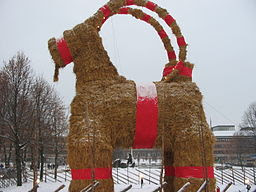 In Druid tradition, the Alban Arthan represents the battle between the Oak King, or Divine Child (God of waxing Light) and the Holly King, or Dark Lord(God of waning Light), in which the Oak King wins and rules until he is defeated by the Holly King at the time of the summer solstice.
In Druid tradition, the Alban Arthan represents the battle between the Oak King, or Divine Child (God of waxing Light) and the Holly King, or Dark Lord(God of waning Light), in which the Oak King wins and rules until he is defeated by the Holly King at the time of the summer solstice.Furthermore, the cauldron of Dagda, symbolizing the promise that nature will bear fruit and care for all living beings on Earth, and Brighid, the bearer of the flame of inspiration, that penetrates the mind and soul, like the Sun that gives rebirth to the light and penetrates the darkest time of the year, reign upon the winter solstice.
Yule decorations are that of mistletoe, holly and evergreens which are displayed upon houses symbolizing that new life will return in the spring. Rituals are performed with candles to symbolize the birth of the new Sun. This is also a time of celebration, feasting, and rejoicing in the promise of a new Sun and the coming of Summer.
May the Solstice bring light to your path and your Yule be merry,
Wayne the Bard




